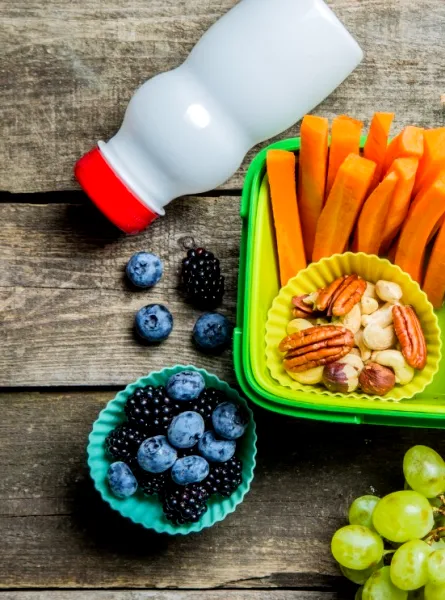
Your kids do not like vegetables and you do not know what to do? Be patient, do not force them to eat and try out these few tips.
1. Invite your child to taste
It can take up to 10 exposures before a child develops a taste for a certain food. It is recommended not to force the child to eat foods they do not like in order to maintain a pleasant momentum at meals and to leave them the pleasure of eating. You can invite them to taste without putting pressure on them.
2. Offer a 2nd choice on the plate
Warning! We are not talking about cooking a different meal for your child but rather offering them an alternative so that they eat a minimum of vegetables. For example, if my child does not like broccoli, I put a little on the plate and I complete with carrots. You can also put a plate of crudités in the center of the table, including those that your child enjoys. That way, the child is exposed to the less appreciated vegetables but will probably eat some vegetables anyway.
3. Be an example
If you do not eat vegetables, your child may want to do the same. Therefore, be a good example for your child by adding vegetables to your plate as well and having fun eating them.
4. Have a neutral attitude during meals
Whether it's for vegetables or any other dish your child does not like, stay neutral. No punishment or reproach for what your child eats (or does not eat) and no reward when they agree to eat a less appreciated food. The taste for the food must develop on its own and not in order to please the parents or to avoid a reproach. Meal time must be a moment of pleasure for the family. Your child will eventually taste it if you do not put pressure on them and if you enjoy eating vegetables as well. Leave them a little time.
5. Vary the ways to prepare them
If your child did not like steamed broccoli, they may prefer it baked in a gratin. Cook vegetables in different ways (steamed, stir-fried, soup, salad, grated, raw, with or without dipping / dressing, baked). Also, learn to recognize your child's preferences (cooked, raw, soft, still crunchy ...).
6. Introduce them in a fun way
Have fun creating shapes or animals with vegetables. Also, vary the colors on the plate. Vegetables will be more attractive and your child will want to taste them more. The internet is full of ideas to inspire you, just like the cover photo of this article.
7. Involve your child in meal preparation
Suggest tasks according to their stage of development and their culinary skills. Here are some examples: Let them rip lettuce, loosen the small florets of cauliflower or broccoli with their fingers, cut some vegetables with a plastic knife. The workshop Saint-Cerf has designed a vegetable and fruit wood cutter, especially for toddlers. For more details on this product, check out this link. You can also cut different vegetables and let the kids garnish their own pizza, submarines or fajitas. The more they are in contact with the vegetables, the more they will want to eat them.
8. Make a garden in your yard
If space allows it, create a small garden in your yard or grow a tomato plant on your balcony. If it is not possible, go for a walk to a market near you and bring your child with you. Let them choose the vegetables they want. You can also subscribe to a food basket. In addition to encouraging your local producers, this allows your little ones to discover new vegetables.
9. Search for recipes
We often tend to look for recipes for the main course but less often for sides. Make a habit of looking for new recipes to prepare your vegetables differently.
10. Try a new vegetable
Try to discover a new vegetable. Suggest the challenge to your child and let them choose the vegetable they want to discover. Then look for a recipe for cooking, as a family. Renew the experiment periodically, 1 time per month or so.
Bonus : Increase the availability
During the weekend, cut raw vegetables that will be used for lunches or for snacks. If there are always ready-to-eat vegetables in the fridge, you increase the chances of your child eating them. When your child comes back from school, take out the tray of raw vegetables so they can eat while waiting for dinner. Wash the lettuce as soon as you return from the grocery store so that it is ready to cook. You can also prepare vegetables for stir-fries or sides in advance. It will therefore be easier to cook them later on.






